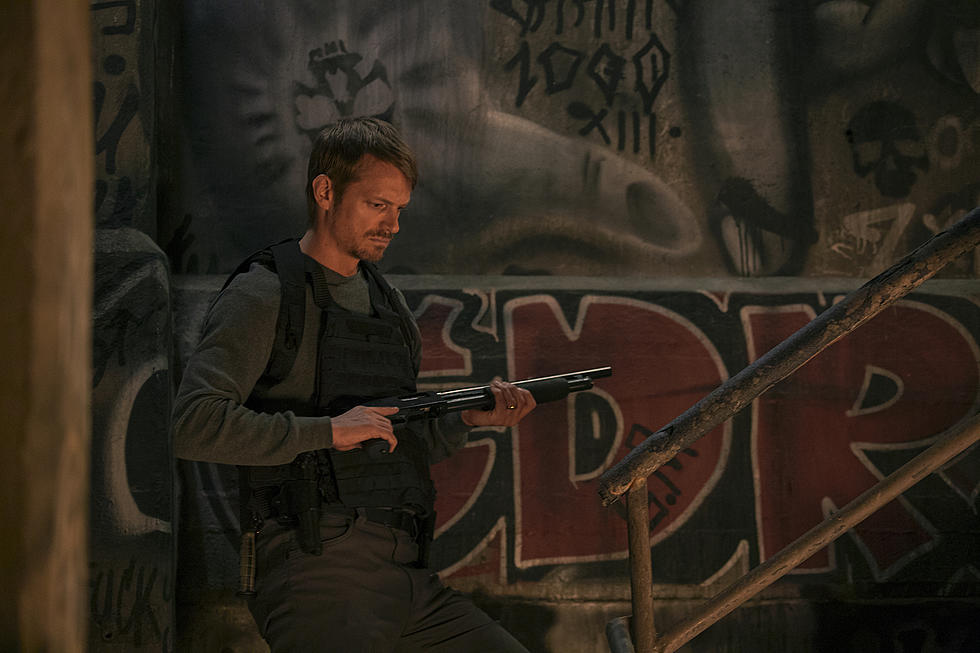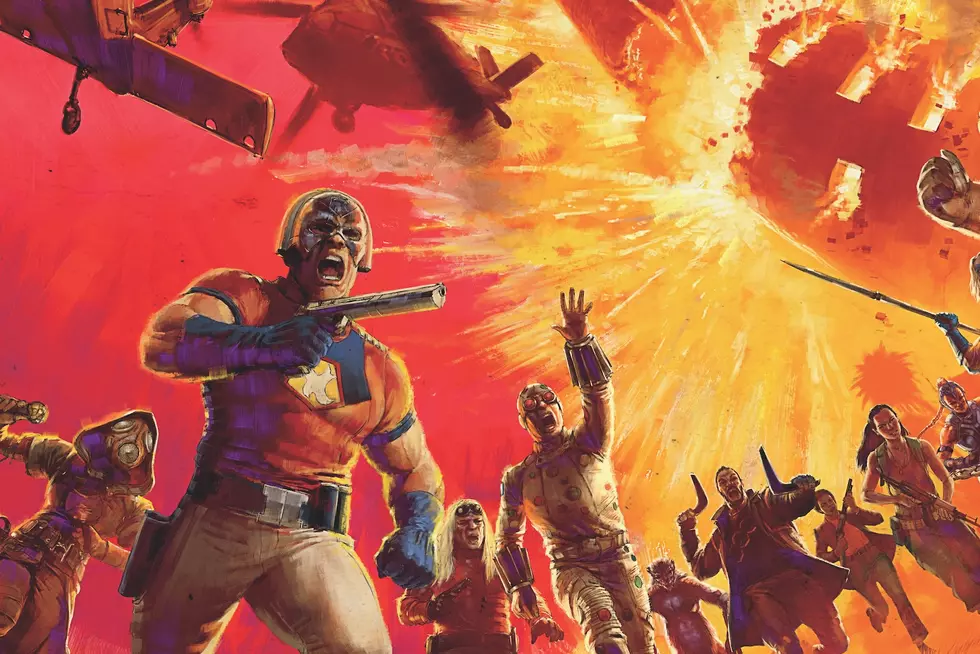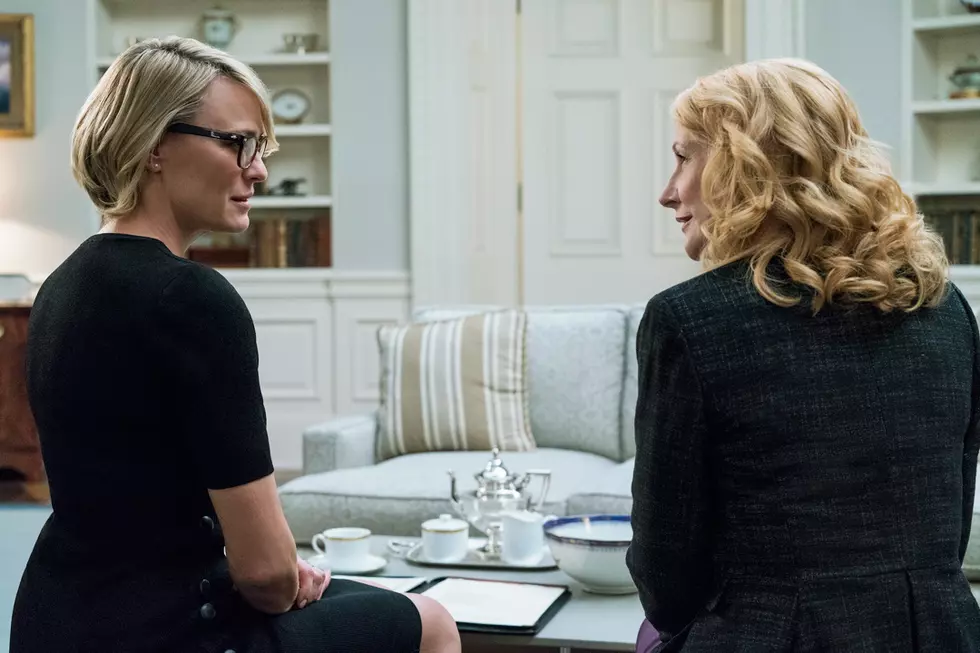
‘The Killing’ Review: “Reflections”/”My Lucky Day”
At the end of last season 'The Killing' did little to provide an answer to its own tagline question: Who killed Rosie Larsen? Councilman Darren Richmond moved to the top of the suspect list thanks to a fake toll booth photo supplied by Detective Holder and one of his shady friends, but is he really guilty? Let's find out!
This season opens with the fallout from Belko shooting Councilman Richmond. Linden knows that Holder is responsible for the fake toll booth photo that puts Richmond at the Casino where they know Rosie was the night she was murdered. Trailing this lead takes Linden to the sheriff's office that oversees the toll booth, where she starts to understand just how deep this conspiracy lies.
Gil Sloane, Holder's sponsor and his former supervisor, is responsible for the fake photo that led to Richmond's arrest -- as well as Belko killing his own mother before attempting to kill Richmond. But it's not just Sloane and Holder manipulating the case -- it looks like Oakes (Linden's supervisor) may be up to no good. Linden follows Sloane to discover he's working with one of the mayor's campaign advisers.
At times 'The Killing' feels needlessly complex. The red herrings aren't necessarily indicative of issues; red herrings and drawn out investigations are better than self-contained weekly procedurals like 'Law & Order' or 'CSI.' After all, an investigation follows each lead to its inevitable conclusion before moving on to the next.
And what has set 'The Killing' apart from the beginning is its exploration of the victim's family and the ripples that are created by the death of one person. Unfortunately, at times the writing undermines the inherent poignancy; for instance: Rosie's aunt Terry, played by Jamie Anne Allman, is often given the most robotic, basic dialogue, and seemingly only exists as mechanical momentum for any scenes she's in. 'The Killing' often suffers from character overload, which is why these first two episodes bring some relief.
At the hospital, Gwen and Jamie wait for Richmond to exit surgery, and Gwen comes clean about revealing Richmond's suspicious disappearance the night of Rosie's murder. Richmond pulls through, but is paralyzed from the waist down.
In the Larsen house Stan is growing increasingly insecure; with Mitch still absent, Terry is doing the best she can to help with the boys, but things take a turn for the sinister when an unseen person leaves Rosie's pink backpack, covered in blood, on the Larsen's doorstep.
At the police station Belko wrestles a gun from one of the officers and after a tense stand-off, kills himself. 'The Killing' really isn't wasting any time dispensing with characters this season -- with Mitch gone, Richmond paralyzed, and Belko now dead, this season seems to be taking a vicious turn. Every scene with Belko this week was intense and captivating, and if it weren't for the show's obvious need to dial back its character roster, Belko would be a welcome mainstay.
In the second part of the premiere, Oakes directs Holder to take Rosie's backpack to Stu, but Holder notes that this isn't the usual evidence guy that Linden would use. Holder takes a dummy backpack and the evidence returns partial print matches for Rosie, which is impossible. Holder confronts Sloane about this, realizing that he's been roped into pressing charges against the wrong guy by a corrupt group of cops, but Sloane tells him to keep his mouth shut because everyone knows he's a dirty cop, and this sort of shady business is the only way that Holder will ever keep a job.
Photos from one of the Super 8 videos Rosie was in reveal a tattooed arm in the mirror of her bicycle, but just as Linden starts to examine the photos, Holder -- whom she's been largely ignoring -- shows up and starts banging on her door.
Though 'The Killing' is often inelegant in its plot maneuvering and dialogue, the actors are its saving grace. Mireille Enos and Joel Kinnaman continue to turn out exceptional work each week, with Kinnaman having quieted down a little of his ghetto affectation, giving a more nuanced performance over time. These actors make the characters almost more compelling than they deserve to be.
Episode's end finds Stan furious with the police for failing to provide protection to his family and convinced that Rosie's killer is now taunting them. He goes to see his former mob boss and asks him to find Rosie's murderer and kill him. This is where the episode fails. With so many loose ends tied up -- and most of them gracefully so -- Veena Sud and Co. decide to send Stan back down the rabbit hole of crime, with yet another cumbersome plot development.
What sense does it make to have Stan go back to his mob boss when his family is in a moment of crisis and possible danger? If he were asking for protection, this would gel with the episode's emasculation themes because it would give Stan an opportunity to feel like he's actively protecting his family. Instead, he's asking a mob boss to, what? Use some sort of omnipotent power to divine Rosie's killer and have him whacked? Does this mob boss have one of those 'X-Men' machines where he can locate all the criminals in the world just by wearing a helmet?
Something evident in this two-part premiere is the show's use and reliance on perception. At the end of last season, when Linden confronted Richmond in his apartment and discovered that he was the mysterious, dangerous John that the escorts at the Beau Soleil agency were all terrified of (including Terry), the audience was instantly terrified of Richmond, thanks to his face being obscured by shadows and the ominous music cues that tell us he is the bad guy. If we knew something Linden didn't -- that he was innocent -- then this scene would feel silly. We would feel compelled to yell at Linden from our living rooms that she has the wrong guy, and if she'd just dig a little deeper, she'd see that.
Veena Sud uses the idea of perception to tell the audience what to believe; in many cases, this means going along with whatever red herring situation she's constructed. Using imposing music cues and placing us in Linden's perspective, we automatically turn against whomever Sud wants us to -- in this episode, we're now suspicious of the mayor and his campaign adviser because Linden watches them from her car as someone else watches her and takes photos.
It's a skillful maneuver, but when will the audience grow weary of being manipulated from week to week, with little to reward our patience? Sud promises an answer to the mystery of who killed Rosie this season, but will the audience be too worn down and exhausted to even care? These first two episodes highlight many of the show's strengths and do solid work of simplifying the plot a little, only for Sud to undermine herself with the Stan/mob boss development. The second season seems promising enough -- but didn't we say that about season one?
More From ScreenCrush









